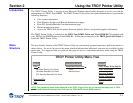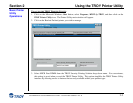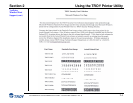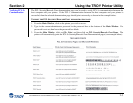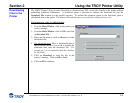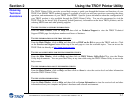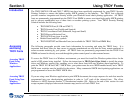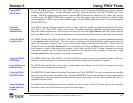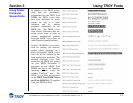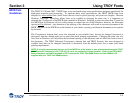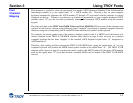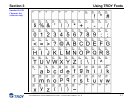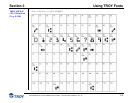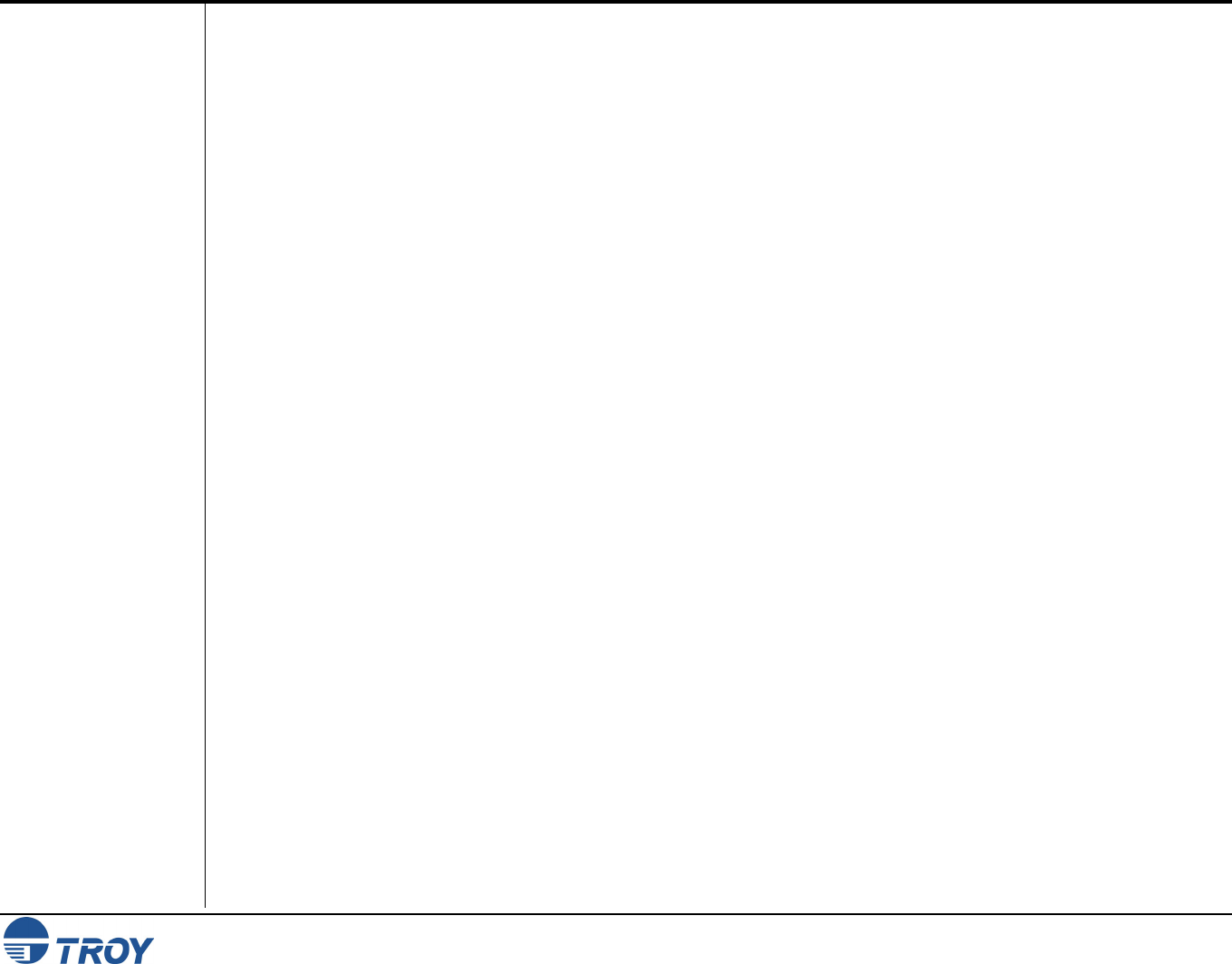
Section 3 Using TROY Fonts
Font DIMM Printer and Font DIMM Kit User’s Guide -- Document #50-70382-001 Rev. G 3-2
Using TROY
MICR Fonts
Using the
Convenience
Amount Fonts
Using the TROY
Security Fonts
Using the TROY
OCR Fonts
Using the Reverse
Helvetica Font
Using the TROY
POSTNET Font
Using the British
Pound and Euro
Symbols
The E-13B MICR font (TROY E-13B, TROY CMC-7) can be used for printing the MICR line in many countries,
including the United States. In some European and Latin American countries, the CMC-7 MICR font is used
instead. MICR document processing requires that the MICR characters be precise in size, shape, and spacing.
For this reason, the TROY MICR font is supplied as a TrueType font; it must not be altered by scaling or other
size manipulation. TROY can provide customer support for your MICR applications only if you use the supplied
TROY MICR fonts.
Your TROY Security Printing Solution includes a large, small and enhanced convenience amount font (TROY
ECF, TROY LCF, TROY SCF). These fonts consist of numbers with their alphabetic spellings placed directly
below the numerical character. These fonts are designed for use in the Legal Amount field only (located directly
below the Payee field). You can enter alphanumeric symbols representing the amount of the check into this field.
The TROY Security font (TROY SECURITY, TROY SECURITY SPANISH) is designed to prevent fraudulent alteration
to the Amount field on the check. The font consists of numbers with their alphabetic spellings placed directly
below the numerical character with a wavy lined pattern running through each character. These fonts are
designed for use in the Legal Amount field only (located directly below the Payee field on the check). You can
enter numeric symbols representing the amount of the check into this field. During document processing,
convenience amounts may be visually read and encoded on the check by bank personnel. In this case, a large
Security Amount font may best meet your bank’s requirements.
The TROY OCR fonts (TROY OCR-A AND TROY OCR-B) are used to print any information (names, addresses,
amounts) on the check that is to be read by automated readers using optical character recognition.
The TROY Reverse Helvetica font is used to print names and addresses on the back of transparent envelope
windows for use in pressure-seal machines.
The POSTNET (Postal Numeric Encoding Technique) font (TROY POSTNET) is used to represent the nine-digit
postal zip code below the postal address line. Using the POSTNET font on your mailing envelopes and postcards
will significantly decrease postal processing time and reduce the chance of errors when manual data entry is
required at the post office.
The British Pound and European currency symbols are used in place of the U.S. dollar sign for the respective
European country and can be selected to print in the audit reports.



